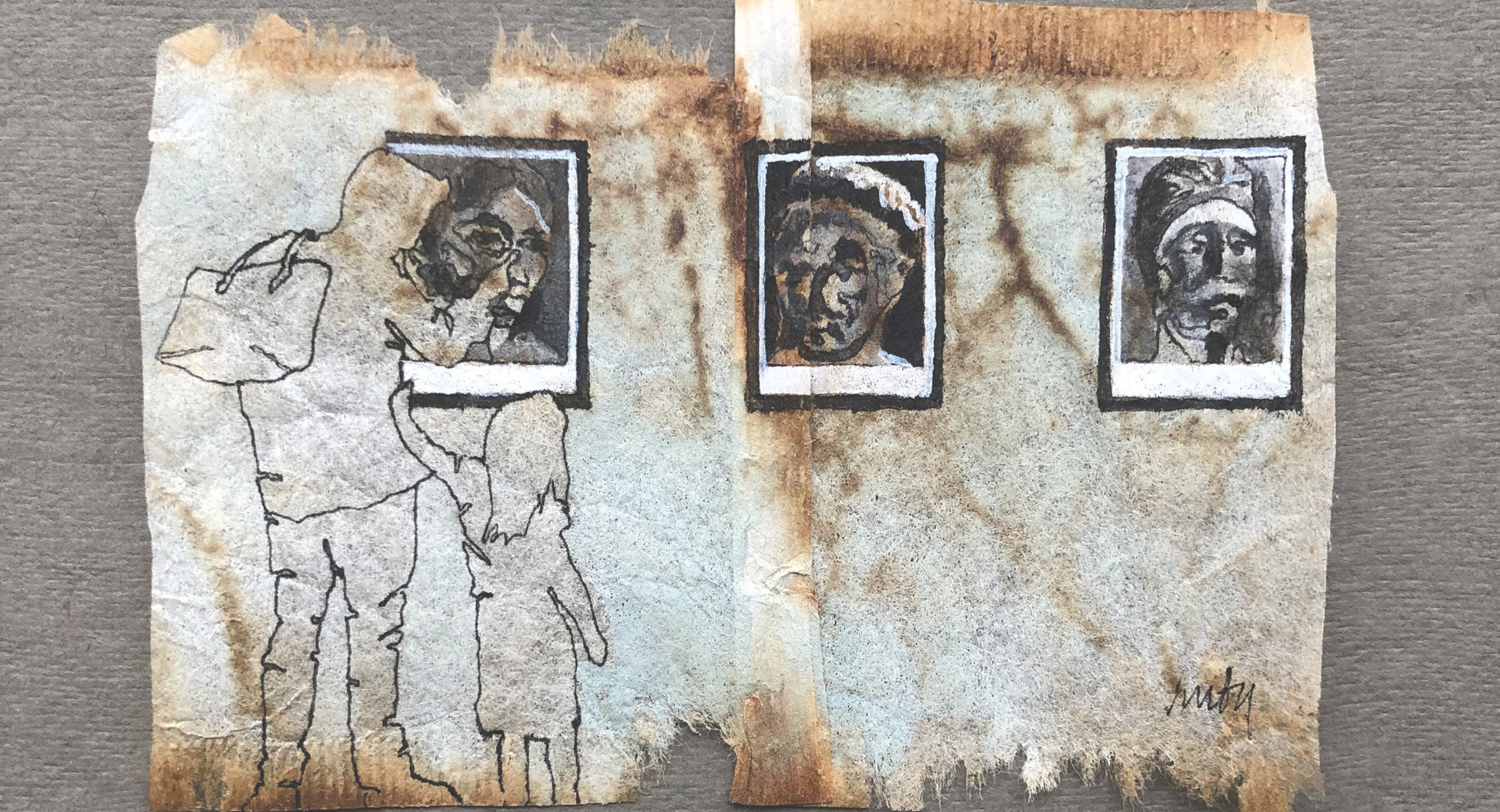Tea is one of the most consumed drinks in the world, it is a product that is good for the body and mind. Furthermore, drinking it every day has positive effects on the body. For many, however, the benefits it brings are not just these. Drinking tea is also a ceremony, a social and spiritual rite, a Zen practice able of transmitting harmony, purity, calm and tranquility.
When tea bags become works of art
Artist and designer New Yorker Ruby Silvious made these concepts her own and chose to make tea the undeniable protagonist of her work.
Almost five years ago, on January 3, 2015, Ruby Silvious conceived what is now her most famous project: 365 Days of Tea. By choosing to draw on a used tea bag, the artist created a series of curious and original works.
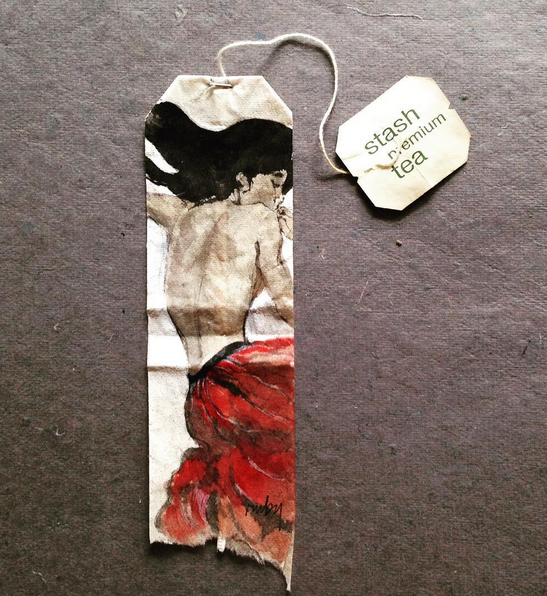
Ruby ties the bags together, empties of their contents, tears, transforms into small miniature canvases and gives them new life. This is a form of recycling, a reuse practice that distorts the usual conception of traditional art.
What does Ruby Silvious’ art represent?
Her tiny watercolor paintings tell quiet and modest moments of everyday life: the arrival of Christmas, the snow, the animals and the surrounding landscape, the sea, different types of food and the most genuine common situations.
Travel, art and tea, this is how we could sum up the last years of the painter who during her stays in Japan and in the south of France created numerous miniature paintings, inspired by the places she visited and the people she met. Scenes of everyday life, such as laundry hanging out in the sun or a walk in the snow, are accompanied by floral reproductions and tributes to great artists in an ironic key, including Modigliani, Velazquez and Schiele.
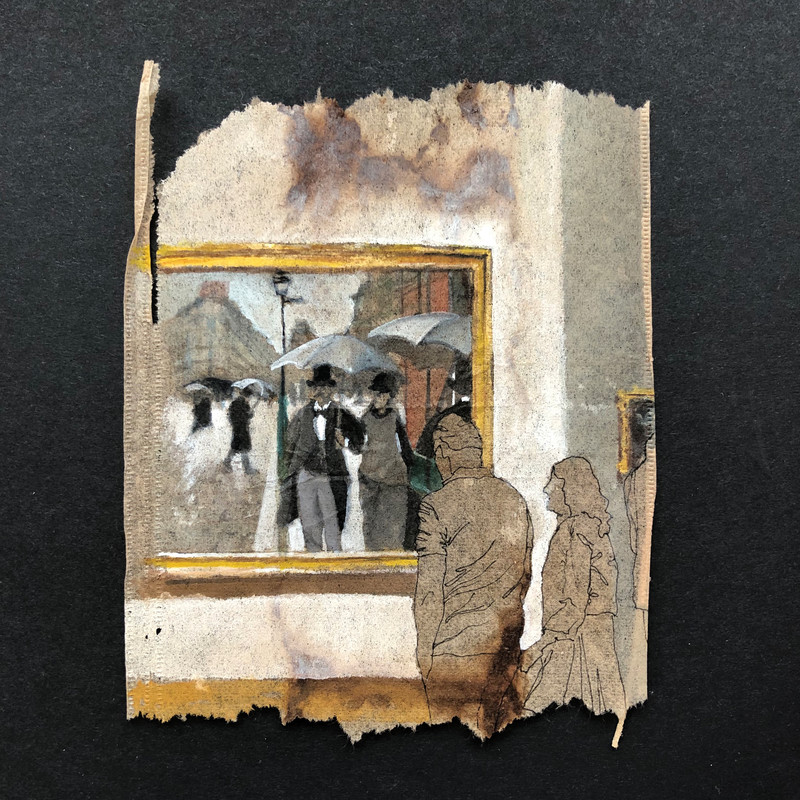
ink, watercolor and gouache
A small and delicious art
In 2019 she dedicated a series to museum visitors, portrayed while admiring her original creations, including two kimonos made by sewing her painted tea bags together.
Boron is a Japanese term that means something torn or repaired. During the Edo period (1603–1867) only a select few could afford silk and cotton fabrics. Boron came to mean the clothing worn by the peasant classes, who mended their garments with scraps of fabric. They eventually resembled patchwork after decades of stitching. The use of indigo dyes exemplifies the Japanese aesthetic of wabi-sabi, as the fabric reflects the beauty of natural wear and use.
The reinvented version of Ruby Silvious boron consists of over 800 used tea bags. After the dried tea bags have been emptied, they are taken apart and ironed. Using engraving techniques with various stencils and sign making tools, random designs are created and printed on the individual tea bags using an engraving press. The intaglio inks in shades of blue replicate indigo dyes resulting in a chambray effect.
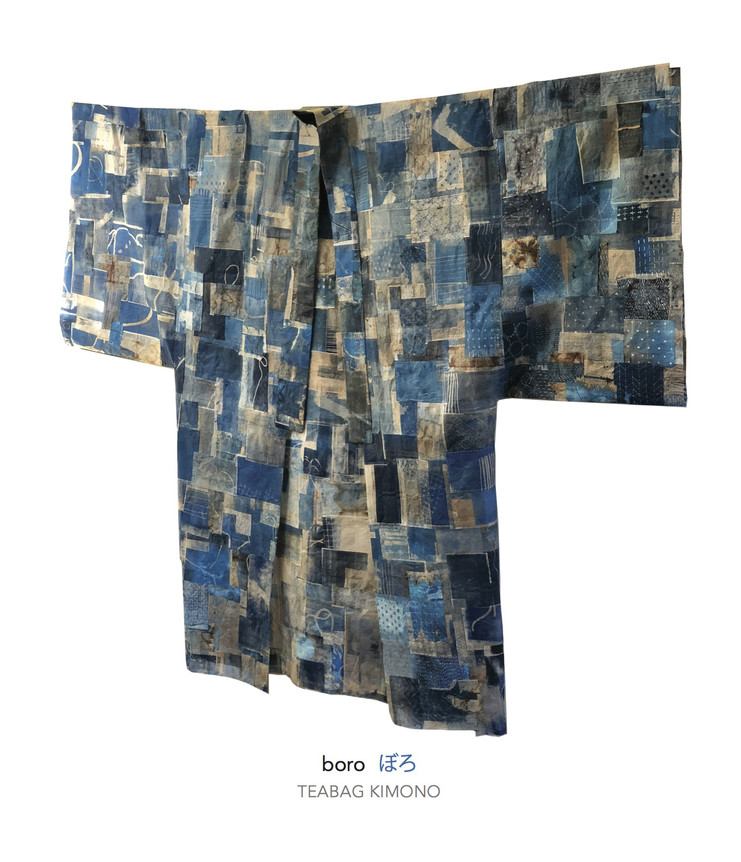
To simulate the sashiko stitching used to repair Japanese boron, faux stitching painted in ruby with blue and white gouache are used. Sashiko (meaning “small slashes”) is a form of decorative reinforcement stitching, commonly found on boron patchwork.
But Ruby Silvious’s art does not only live on tea bags, in fact she likes to paint miniatures in general, hence one of her series which concerns scraps of scorched paper and the back of letters.
Among the ‘canvases reclaimed’ by the dustbin, as Ruby defines them, there are also shoes, shells and papier-mâché bowls. And, it was to be expected, for her too the lockdown was a source of inspiration, together with the blue period of Pablo Picasso: during the isolation, in fact, the artist dedicated herself to a new series, “Covid Blues” made with materials found in the house.
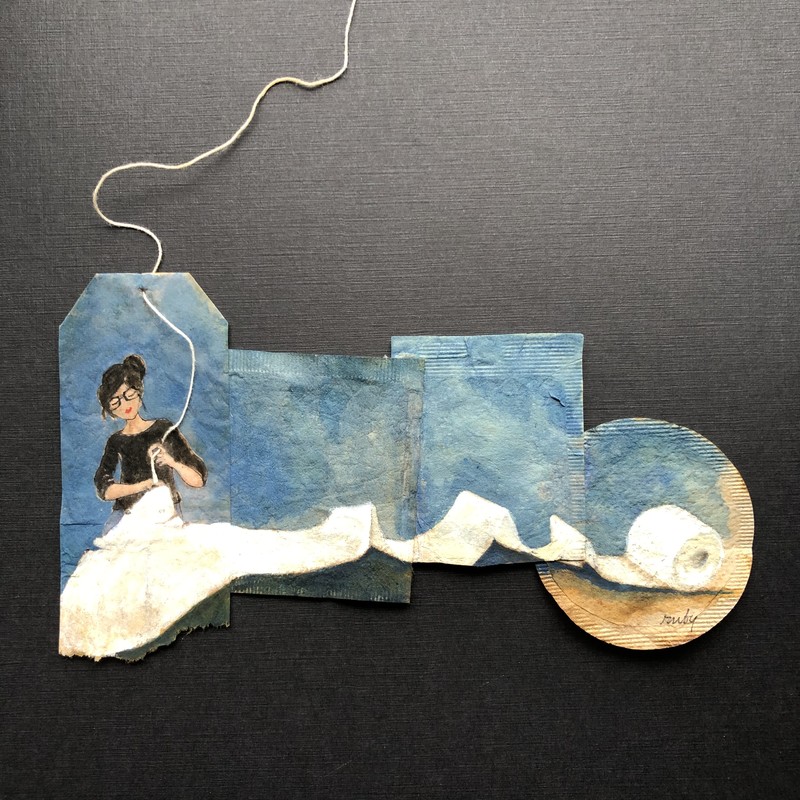
watercolor, gouache on used tea bags
Ruby’s paintings seem to whisper to us that everything is recovered and art lives everywhere, even on tea bags.
Read also Dipingere rispettando l’ambiente e la salute and visit the website of https://www.rubysilvious.com/.


